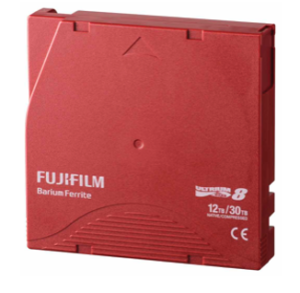
Recently my neighborhood had a rash of car break-ins by what turned out to be just a band of mischievous teenagers. But what struck me about this occurrence was the flood of homeowner video surveillance clips that appeared on social media and that were sent to the local police department to help identify the wrongdoers. It seems like everyone in the neighborhood has a home video surveillance system, perhaps to catch a doorstep package thief, or if nothing else, to catch the guilty dog walkers!
A Booming Market for Video Surveillance Solutions
Indeed, the video surveillance market is booming, not just in the relatively nascent consumer market, but in the commercial market and has been for a long time – in a much bigger way. The reasons for this include more affordable cameras with better resolutions soaring from 720p up to 4k and even 8k. In the meantime, video surveillance systems are finding more and more applications. Retail shopping malls, banks, hotels, city streets, transportation and highways, manufacturing and distribution operations, airport security, college dorm and campus security, corporate security, police body and dash cams, to name just a few – all need good quality video surveillance.
Video Retention Costs Soar
However, these higher resolution cameras have sent the costs of video retention soaring. So much high-resolution raw footage quickly fills up available hard disk drives commonly used to store or retain video surveillance content. According to a Seagate video surveillance calculator, an installation of 100 cameras recording eight hours a day at 30 frames per second, 1080p resolution, with a retention period of 90 days would require 2,006 terabytes of storage. That’s 2.0 petabytes of expensive, energy-intensive hardware. Those with unlimited budgets can simply add more disks. But everyone else faces tough choices: shorten retention periods? lower video resolution? reduce the number of cameras or frames per second? None of these support the goals of why the video surveillance system was installed in the first place.
LTO Data Tape and New TCO Tool to the Rescue

But there is a better way – incorporate a modern LTO data tape tier into video surveillance storage.
We know from IT data storage TCO tools that it is anywhere from three to four times more expensive to acquire and operate HDD systems compared to tape for long-term storage. Just the cost of energy to keep HDD spinning 24/7 compared to tape that consumes no energy unless being read from or written to in a tape drive, makes a big difference to the bottom line, not to mention the environment!
But what’s the impact of incorporating an LTO tape tier to compliment HDD into video surveillance operations? According to a new video surveillance TCO tool developed by TCO expert Brad Johns, when incorporated into a video surveillance system, an LTO tape tier can reduce the cost of retention by 50% when used in conjunction with HDD. This allows for the luxury of longer retention periods, higher frame rates and better resolution.
LTO Friendly VMS Solutions Arrive
It can be done but is it technically feasible, or even just user-friendly, to add an LTO tape tier for long-term retention? The answer is yes! Take Cozaint VMS software for example, it now has the capabilities to easily playback video from either tier one HDD or tier two LTO without any additional steps needed by the surveillance timeline operator. So again, the answer is yes – today’s modern high-capacity LTO cartridges are user-friendly, easy to access and provide the cost-effective solution for longer retention periods of high-quality video surveillance content so badly needed.
The value of LTO data tape has been leveraged to support enormous volumes of video content workflows in the Media & Entertainment industry for a long time. In fact, LTO with Linear Tape File System (LTFS) has become a defacto industry standard allowing for ease of file sharing and active archiving. LTO’s high capacity at 12.0 TB on LTO Gen 8 (soon to be 18.0 TB on LTO Gen 9), best in class reliability and longevity, with lowest capex/opex, have made it indispensable in Hollywood.
Thinking About the Cloud?
As awesome as the cloud is, and cloud service providers are some of the world’s largest consumers of LTO tape, cloud is not a panacea and likely not a good fit budget-wise for video surveillance apps. Uploading data into the cloud can be inexpensive. But pricing structures are less favorable when retrieving that data from the cloud especially if the coldest archival service levels won’t adequately support frequency of content access and retrieval. In addition to the escalating cost of retrieval, bandwidth costs and delays in moving content to and from clouds can also be an unpleasant surprise.
While the homeowners in my neighborhood probably won’t be looking for an LTO tape tier anytime soon, the real video surveillance pros will be glad to know that a tried and true budget relieving solution is finally on their doorstep.
